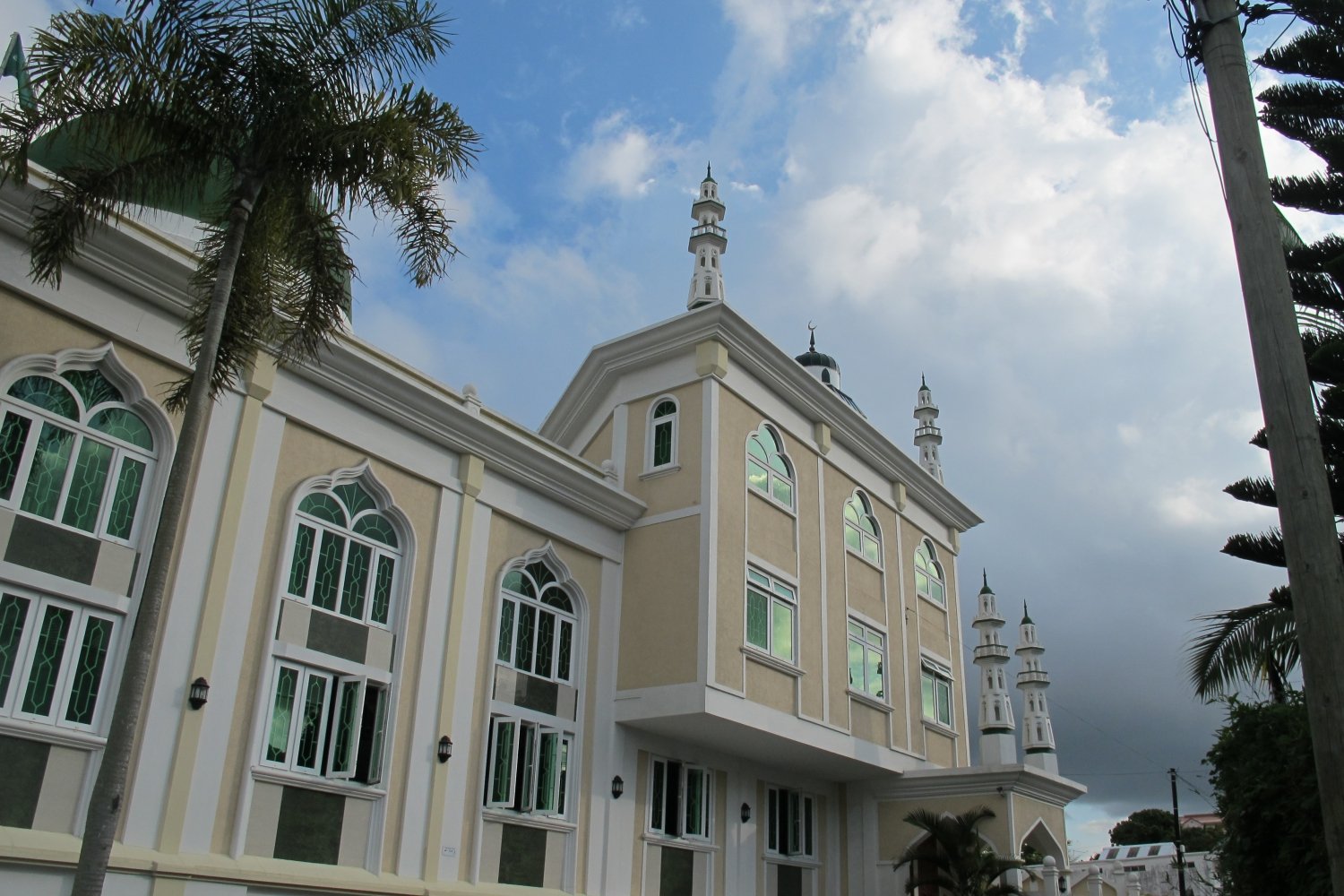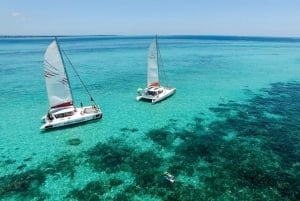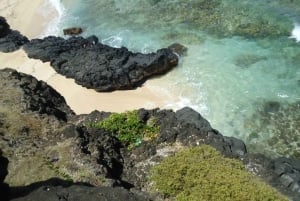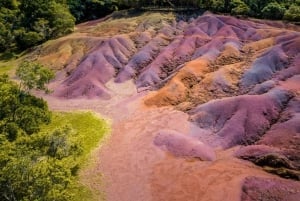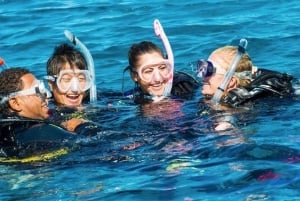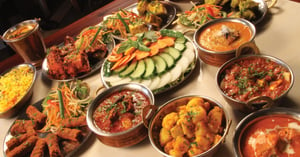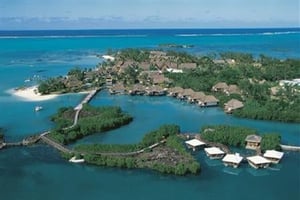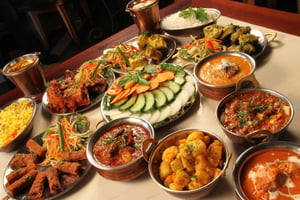Muslims in Mauritius
Origins and Arrival of First Muslims in Mauritius
Book Top Experiences and Tours in Mauritius:
If youʻre booking your trip to Mauritius last minute, we have you covered. Below are some of the top tours and experiences!- Black River: Dolphin Swim and Whale Watching by Speedboat
- Full-Day Cruise to Ile aux Cerfs with BBQ Lunch Included
- Mauritius: Gris Gris Beach & Mamzelle Waterfall Guided Tour
- Mauritius: Vanilla Park & Beaches Tour with Extra Option
- Chamarel: 7 Coloured Earth Geopark Entrance Ticket
With the start of the month of Ramadan we wanted to pay tribute to our Muslims friends and trace back their arrival on the island to better help you understand the history and vibrant culture of our country. As you go around the island you will be able to admire the beautiful mosques with their amazing architecture in our different towns and villages. In fact the number of mosques, churches, temples and pagodas present in the landscape of the island reflects its rich cultural diversity.
The population of Muslims was 33% of the total population during 1835, 64% during 1861, but reduced to less than 25% by 1909. Today Muslims constitute over 17.3 per cent of Mauritius population. Back in 1968 the island became independent, and in the same year The Constitution of the Republic of Mauritius which is the supreme law of Mauritius was adopted where no official religion is defined.
The Muslims in Mauritius are mostly of Indian descent. The presence of the first Muslims in Mauritius dates back to the early days of the French colonisation. In 1735, the famous French Governor Mahé de Labourdonnais brought a group of skilled tradesmen from India to work as artisans and seamen in the dockyard and harbor in Port Louis (they were commonly known as ‘lascars’). The term ‘lascar’ which has over the years been singularly linked with the Muslims dates back to that period. As at today there is a large number of Muslims living in the region of Port Louis.
During the period of colonization of the island by the British (1810-1968), large numbers of Muslims arrived to Mauritius as part of the large scale indentured labor force brought from India. Sir Robert Townsend Farquhar was the first Governor of the British colony from 1810-1823. During that time he engaged among other projects in giving the colony a good network of roads. In need of labour force to complete the work, he obtained the services of hundreds of Indian convicts, who were mostly Sepoys (Indian soldiers serving under British orders) found guilty of military or political offences. In 1815, the first batch of convicts arrived in the colony among whom many were Muslims. They thus built most of the early roads in Mauritius linking Port Louis, Moka, Quartier Militaire, Trois Ilots and Rivière des Creoles. They also participated in the construction of today’s well known historical fortifications namely the Fort Adelaide, which is mostly known as the Citadel.
In 1833 a first group of indentured labourers from India was brought to the island to work in the cane fields, among whom were a number of Muslims. There were a total of 450,000 indentured workers during the period of 1835 to 1907 who immigrated to Mauritius from India mostly from Bihar, Uttar Pradesh, Orissa, Bengal, Mumbai and Kolkota. After 1909, the immigration was stopped; the workers who were then sent on the island, came for a period of five years after which they were returned to India. However only 160,000 returned to India by the year 1922, while others settled down in Mauritius.
It is also believed that there were a number of Muslims among the African slaves brought in the colony to work on the sugar-cane plantations. Why? Because, most of the slaves brought to Mauritius at the time came from the east coast of Africa, namely from Quiloa and Mombasa. There has always been a strong Muslim presence in these African regions. However their identities were lost under the Christian names given to them by their masters.
There was a small but influential group of wealthy Muslim traders from Gujarat and Chettiars from South India, who settled voluntarily on the island at the same time as the indentured labourers. These traders did not have any binding contracts with the Governors of the time as they came on their own to start businesses on the island. They mostly engaged in the business of grocery items and building materials. They had their businesses in Port Louis mostly in the following areas: L’Hôpital (known now as Louis Pasteur Street), Deslimites (known now as Remy Ollier Street) and Queen Street. Today many of the leading Muslim stores are still located in those areas bearing testimony to the past history. The presence of the Gujerati traders in the colony increased the social prospects of the Muslim community in Mauritius.
The number of muslim traders rose in the years that followed the arrival of the first traders. Traders from Surat (which is a state in Gujarat) known as the Surtees, who were engaged principally in the commerce of textiles, also settled on the island in Port Louis, in the area surrounded by Royal, Bourbon, Farquhar and Corderie Streets, the place was popularly known as the Surtee Bazaar. Some of them settled in Beau Bassin, Rose Hill, Flacq and Poudre d’Or. They became leading dealers in foodstuffs and textiles over the years. Today Muslim owned textile stores are still among the most reputable textile dealers in Mauritius. As the years went by and business flourished for the Muslims on the island, they began to venture in other sectors: the sugar and maritime (steamships and the docks) industry.
The Muslim traders who cared much about their culture and religion helped build mosques and madrassas (religious schools). In 1805, the first mosque in Mauritius was built in an area which was then known as Camp des Lascars in Port Louis. On 16 October 1805, Governor Decaen (French Governor) agreed to sell a plot of land to the Muslims for the construction of a building for the practice of their religion their daily prayers. You can still see it today on Dr Hassen Sakir (formerly Pagoda) Street. It is known as Masjid Al Aqsa. It is with no doubt that today it is considered as a treasure of the past as it has been the birth-place of a proper mosque where the local Muslim community could gather and offer their prayers at that time. As it is intimately linked with the history of the country, the Al Aqsa Masjid has been conferred the status of National Heritage as a religious and cultural site in April 2016. (The Site has also filed an application to be registered as the World Heritage of UNESCO through the
Ministry of Culture)
By 1965, there were 65 mosques in the country. The Jummah Mosque in Port Louis was built in the 1850s. With the growing number of Muslims in Port-Louis at that time there was in need of a larger mosque. Between 1857 and 1877, seven different lots around the mosque, amounting to three-quarters of an acre, were bought by the Muslim merchants and donated to the mosque for its expansion. The Jummah Mosque is described in the Ministry of Tourism's guide as “one of the most beautiful religious buildings in Mauritius”. The mosque's architecture is a blend of Moorish and Mughal influences. It is 10 minutes walk from the Caudan waterfront and not very far from Al Aqsa Masjid. You may step inside the inner courtyard to see the architecture, except while the mosque on Fridays at time of prayers and during the month of Ramadan. We invite you to have a little walk around to admire all these beauties during your stay in Mauritius.
Masjid Al Aqsa
La Rue Dr Hassen Sakir, Port Louis
info@alaqsamasjid.net
Jummah Mosque
Royal Road A1 Port Louis
Tel: 230 242 8025


